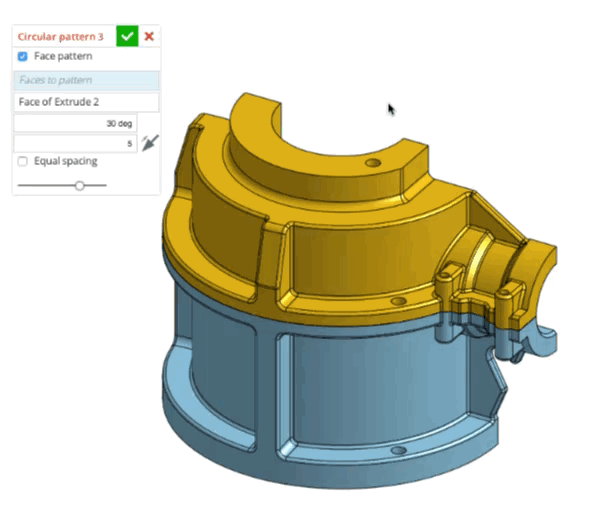At Onshape, we see lots of great designs created by experienced CAD users. The best component models always share certain qualities. They are built with the least amount of features, behave well when edited, and are easy to navigate.
After countless discussions, it is clear that these CAD masters have a definite strategy when approaching modeling, and more often than not, users ask themselves these three questions when starting every design:
1. What is the Optimum Default Orientation?
It’s a simple consideration that is often overlooked. An easy approach to determining the best orientation is to imagine the part or assembly an isometric, deciding which surfaces are upwards facing. Consider the caster models below. Both models are identical. However, the model on the right has a more realistic orientation that not only communicates its purpose with clarity, but helps speed up adding it to a parent assembly.

2. Is there any symmetry?
There is an incredible opportunity to save time when modeling. Not only is there potential to model only half or a quarter of many parts, by giving forethought to symmetry, but in most cases symmetry will help determine how the part is positioned on the origin. For most symmetric models, it is desirable that the origin be centered. A good exercise is to consider a milk crate. While most people recognize each side face is identical, they miss the fact that only half of a face needs to be modeled and can be mirrored via an angled face in the corner.

3. Are there any patterns within the part?
It’s no surprise that identifying patterns and seed features early in the design process will save modeling time and also enable edits to propagate throughout a part in the most efficient manner. One technique that is often missed is combining patterns into one feature. Modern systems like Onshape provide additional advantages as you can pattern faces on multiple parts within the same command. Consider the following example of two joined castings created in one Onshape Part Studio. Not only can you pattern different two-bolt hole features on the top half, but you can also simultaneously add two similar patterns on the bottom.

Next time you start a CAD project, take the time to consider these three simple questions. This exercise should yield great rewards. Your models will be easier to understand, add to assemblies, and edit in a manner that delivers predictable results.

